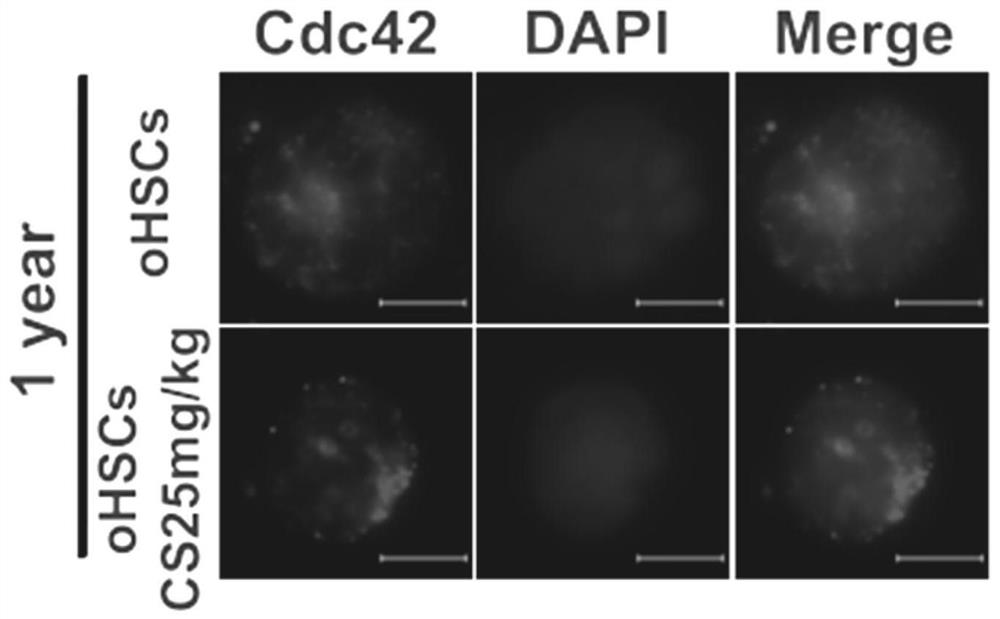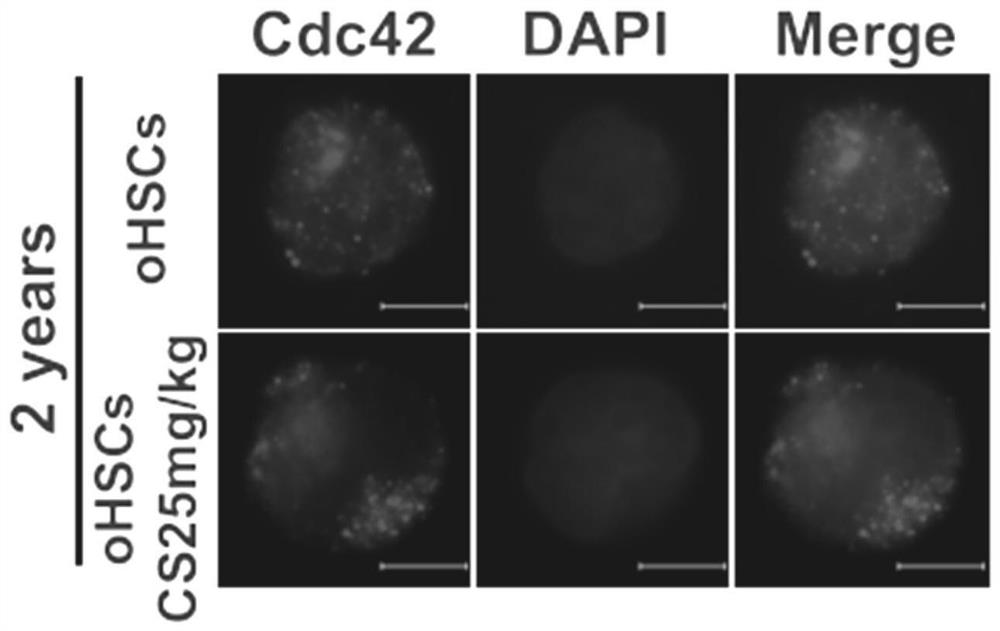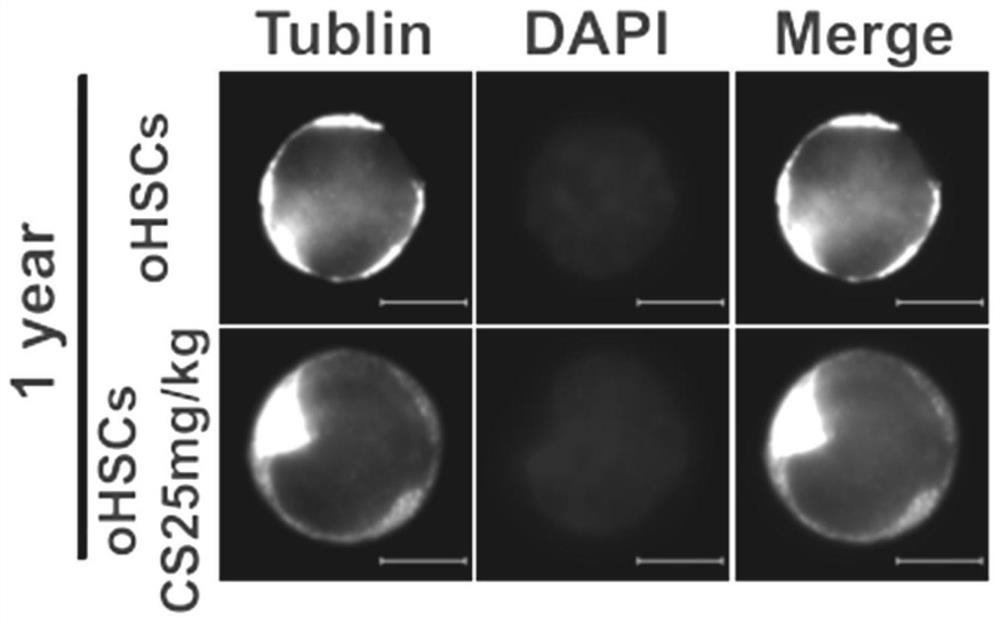Application of RORa protein and agonist thereof in preparation of anti-aging drugs
An anti-aging and agonist technology, applied in the field of biomedicine, can solve problems such as doubts about efficacy and safety, lack of anti-aging targets, and complex components of anti-aging drugs
- Summary
- Abstract
- Description
- Claims
- Application Information
AI Technical Summary
Problems solved by technology
Method used
Image
Examples
Embodiment 1
[0070] The cholesterol sulfate compound (Cholesteryl sulfate, CS for short) used in this scheme is specifically cholesterol sulfate sodium salt (CAS: 2864-50-8), and the molecular formula is shown in formula (I). The main antibody information used in this protocol is as follows: Cdc42 antibody (Santa Cruz, RRID: AB_631213), α-Tubulin (Cell Signaling, RRID: AB_2567774), Cy3 goat anti-rabbit IgG (Jackson, RRID: AB_2338000), Alexa Fluor goat anti-rabbit IgG (Jackson, RRID: AB_2338046), phosphorylated H2AX antibody (Cell Signaling, RRID: AB_2118009).
[0071]
[0072] (1) Preparation of CS solution: CS was dissolved in DMSO to prepare a CS stock solution with a concentration of 50 mg / ml. CS working solution is formed by diluting CS stock solution to 5 mg / ml. CS working solution was used to prepare the test agent (injection) of CS group, and its components were: CS working solution 100 μL, Tween 80 20 μL and PBS 880 μL (PBS is conventional phosphate buffered saline solution in ...
experiment example 1
[0080] The mouse HSCs prepared in Example 1 were used for the detection of this experimental example, as follows:
[0081] 1. Immunofluorescence detection of cell polarity-related markers (Cdc42 and tubulin)
[0082] The polarity of cells means that the two ends of cells (groups) have different shapes or functions. With the progress of cell senescence, cell polarity gradually disappears. Studies have shown that Cdc42 (cyclin 42 in cell division) and tubulin (Tublin) in HSCs are important markers of cell polarity (Cdc42 Activity Regulates Hematopoietic Stem Cell Aging and Rejuvenation, Maria Carolina Florian, Cell Stem Cell 10, 520–530, May 4 , 2012). The highly asymmetric localization of Cdc42 and tubulin is not related to the substrate binding sites flanking the cell, nor is it related to the uneven distribution throughout the cytoplasm, but is the key to causing changes in cell polarity, which can affect and reflect cellular senescence status. In normal mouse HSCs, Cdc42 ...
experiment example 2
[0093] Experimental example 2: Immunofluorescence detection of RORa protein
[0094] 8-12-week-old mice were selected as young mice, and 18-month-old mice were selected as old mice for experiments. Except that the mice used in the experiment have been changed, other experimental settings and experimental procedures are shown in Example 1. After the experiment, the blood stem cells of the mice were taken for immunofluorescence experiments. For the experimental results, see Figure 16 (yHSCs represent young mice) and Figure 17 (oHSCs represent aged mice). Figure 16 and Figure 17 Among them, the image on the left is a representative cell image, and the image on the right is the statistical graph of the fluorescence intensity of about 80 cells in each treatment, and the average value (data format is mean ± SD, using T test P value to judge significance). The experimental results showed that the expression of RORa protein was up-regulated when CS was used to treat young and ...
PUM
 Login to View More
Login to View More Abstract
Description
Claims
Application Information
 Login to View More
Login to View More - R&D
- Intellectual Property
- Life Sciences
- Materials
- Tech Scout
- Unparalleled Data Quality
- Higher Quality Content
- 60% Fewer Hallucinations
Browse by: Latest US Patents, China's latest patents, Technical Efficacy Thesaurus, Application Domain, Technology Topic, Popular Technical Reports.
© 2025 PatSnap. All rights reserved.Legal|Privacy policy|Modern Slavery Act Transparency Statement|Sitemap|About US| Contact US: help@patsnap.com



